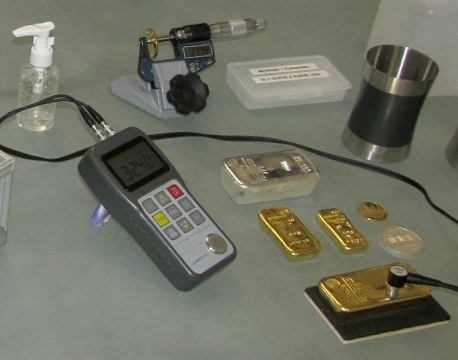9.4
7.585 Reviews

English
EN
There are several ways to check the authenticity of gold and silver. Gold and silver have a very high density, which means that counterfeits often fall through the cracks due to too low weight or too large dimensions. If you have a common coin, you can easily compare the dimensions with the official specifications of the coin in question.
Do the dimensions match, but do you still have doubts about the authenticity? Then, listen to the sound the coin makes when you drop it on a table. Both gold and silver have a very high-pitched and bright sound, while fakes based on other metals or tungsten emit a dull sound.
You can create a Gold coin Place on your fingertip and hit it with another hard object (a coin). The sound you hear should be clear and high-pitched.
Gold bars can also be easily distinguished with a sound test, but if it is a larger gold bar, other methods are needed to check the authenticity. Radiological equipment can be used to investigate the properties of the material and a test drilling in the metal can also be used to quickly discover whether a gold bar is genuine.
It is important to purchase gold and silver from a licensed dealer who can purchase the products directly from the producer. Is a gold bar still in the plastic packaging, complete with unique serial number and certificate? Then you can be pretty sure that the gold is genuine.
Silver Coins can also be distinguished from fake coins by their unique sound. If you have Dutch silver coins, you can also check the authenticity with a magnet. A silver coin is not picked up by a small magnet, but a nickel one is. This allows you to quickly check a large stock of silver coins.

The authenticity of gold and silver can be checked in various ways